| Back to Back Issues Page |
 |
|
Bangkok Travelbug May 10 The beauty of Khao Yai National Park April 30, 2010 |
| Hello
Dong Phapayen - Khao Yai Forest Complex The Dong Phayayen – Khao Yai Forest Complex is a vast forest complex covering the provinces of Saraburi, Nakhon Nayok, Nakhon Ratchasima, Prachinburi, Sakaeow and Buriram. It covers a distance of 230 km from Ta Phraya National Park on the Cambodian border to the east to Khao Yai National Park to the west. The forest complex is home to about 800 fauna species, including 112 mammal species, 392 bird species, 200 reptile and amphibian species. It’s an important conservation area for endangered species to ensure their long-term survival. On 14 July 2005 this forest complex became one of the natural sites added to UNESCO’s World Heritage List together with the Norwegian fjords. The other natural site in Thailand in the UNESCO’s World Heritage List is Thungyai-Huai Kha Khaeng Wildlife Sanctuaries. This site which was added earlier in 1991 stretches over Kanchanaburi, Tak and Uthai Thani in north-western Thailand. On 29 April 2010, it was reported that a seven-year old tigress gave birth to four tiger cubs in the Huai Kha Khaeng Wildlife Sanctuary in Uthai Thani. This is the largest litter of tiger cubs delivered in this country and it’s a fitting way to commemorate the Year of the Tiger. The Khao Yai National Park, a two hour and a half hour drive from Bangkok, is part of the Dong Phayayen – Khao Yai Forest Complex. 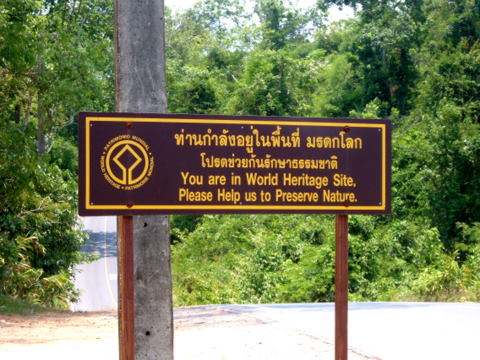
On the World Heritage list Table of contents Khao Yai National Park Khao Yai is the first national park in Thailand and was designated on September 18, 1962. The park covers an area of 2,168 square kilometres over four provinces, Nakhon Ratchasima, Nakhon Nayok, Saraburi, and Prachin Buri. In 1982, the park was also listed an ASEAN Heritage site. Khao Yai is part the Dongrak Range, a mountain range that starts from the south of Surin on the Thai Cambodian border. The range forms a barrier between Thailand to the north and Cambodia to the south. It continues westwards as it winds its way from the Cambodia border past Sa Kaeo and onto Saraburi in central Thailand. The Dongrak and the Phang Hoei Range that runs from northern to central Thailand, separate the Korat Plateau from the rest of central Thailand. These mountain ranges are covered by tropical evergreen forests and wide grasslands. The highest mountain is Khao Rom at 1,351 m. Five rivers drain the area which has abundant wild life. 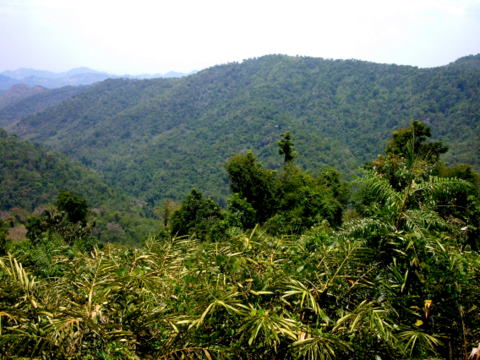
Draped in tropical greenery The area is home to wild elephants, monkeys, deer, porcupines, butterflies, insects, bats and a large variety of birds. We didn’t get a chance to meet any of these residents of the park even though there were notices along the way reminding motorists to be careful of animals crossing the road. Table of contents Khao Yai’s attractions Tuscan charm in Khao Yai The road to the Khao Yai National Park has several beautifully designed restaurants, cafes, souvenirs shops and steak houses. The area is also famous for its dairy farms, vineyards, wineries, resorts and golf courses. But it was this cluster of buildings that caught my eye. They stood out because there were most un-Thai. 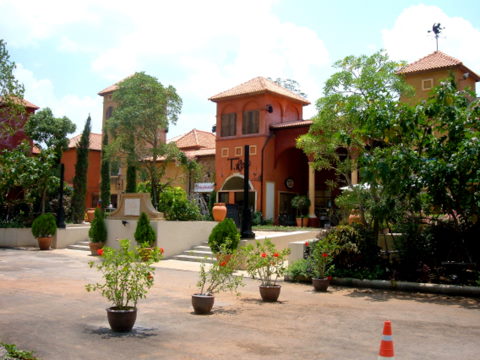
Little Italy in Khao Yai These cafes, restaurants, souvenirs and flower shops are reminiscent of some small Italian village. 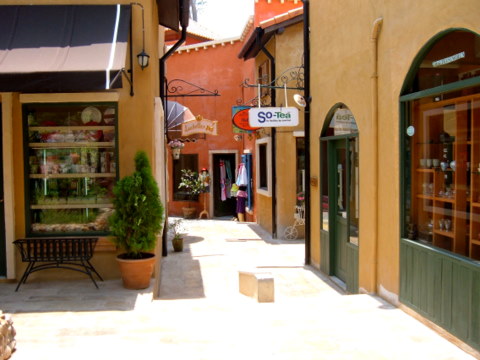
Narrow streets of cobbled stone This place is called Palio, after “Il Palio” the horse race that’s held twice a year among 10 of the 17 Contrade (districts) in the medieval city of Siena, Italy. 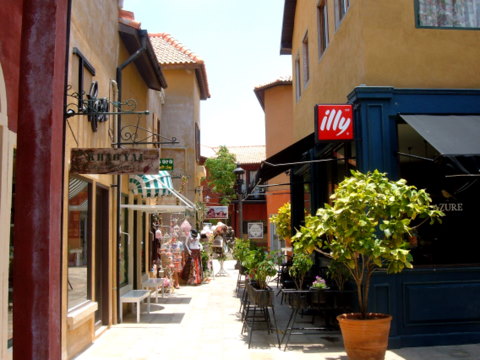
Touch of Tuscan charm The owners of Palio, who just love Tuscany in Italy, decided to add the Tuscan charm of Florence and Siena to Khao Yai. They have a similar development in another part of Khao Yai called Primo Posto but we didn’t have the time to go there. The national park However it is the sheer natural beauty of the national park that’s the main attraction of Khao Yai. 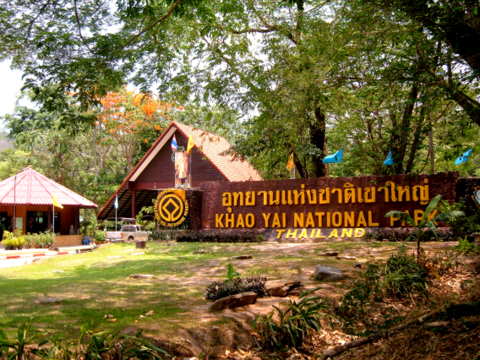
Entrance to the national park After paying the entrance fee of 40 baht per head and 50 baht for the car, we drove along a winding mountain road with lush greenery on either side. The steep foliage covered slopes on one side of the road drops sharply on the other side to the jungle below. 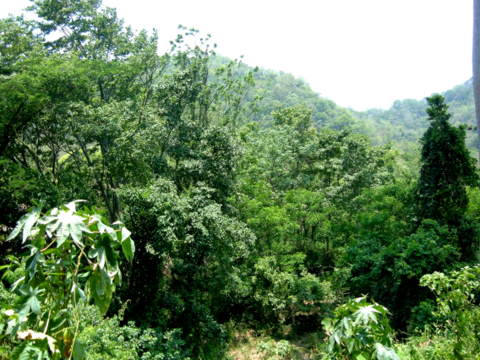
View along the way At this viewing point near the top, we had a breadth taking view of the surrounding area. 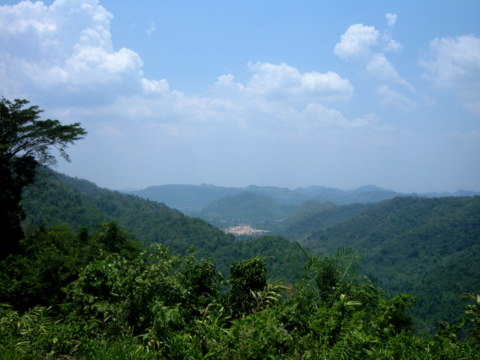
Green mountains for as far as the eye can see Here’s a shot at the viewing point where the road levels off before it goes up to the next level. 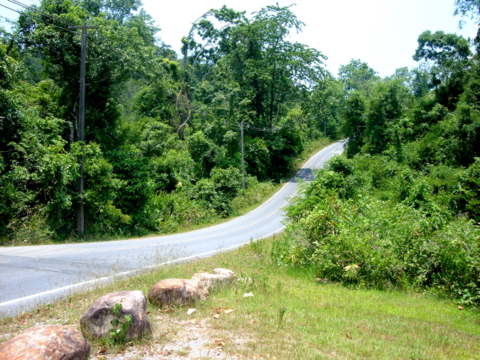
Road through the park Besides sightseeing, other activities in the park include camping at designated camp sites and hiking through the jungle trails. 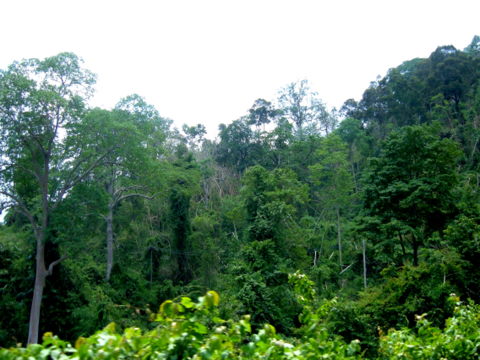
Living with nature Unfortunately the car was having problems and we didn’t want to risk going further on to the three waterfalls ahead, which was a real disappointment. I’m sorry I was unable to bring you everything that I intended to. However these scenes made the trip worthwhile. They were such a pleasant relief from the current tensions in some parts of Bangkok. 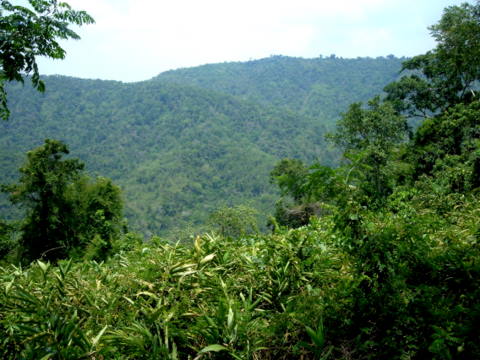
Peace and serenity 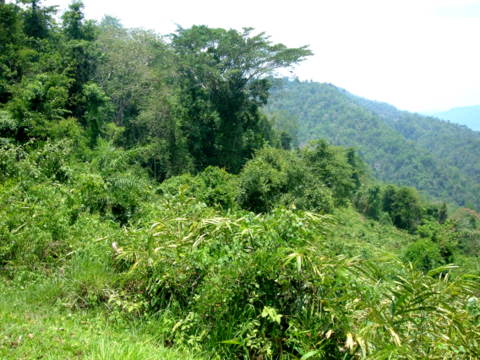
Table of contents Map to Khao Yai National Park Please click on this link for the map to Khao Yai National Park. There are two ways of getting there by car.
Table of contents Next month Prasart Phimai – the Khmer sanctuary in Korat Please forward this ezine to a friend if you enjoyed reading it. If you received this from a friend, please subscribe at Bangkok Travelbug. What you think of the Bangkok Travelbug? We love to hear from you Read what others have said See you next month! Eric Lim Visit our home page at Tour Bangkok Legacies. Copyright@2008-2009 Tour Bangkok Legacies All rights reserved |
| Back to Back Issues Page |